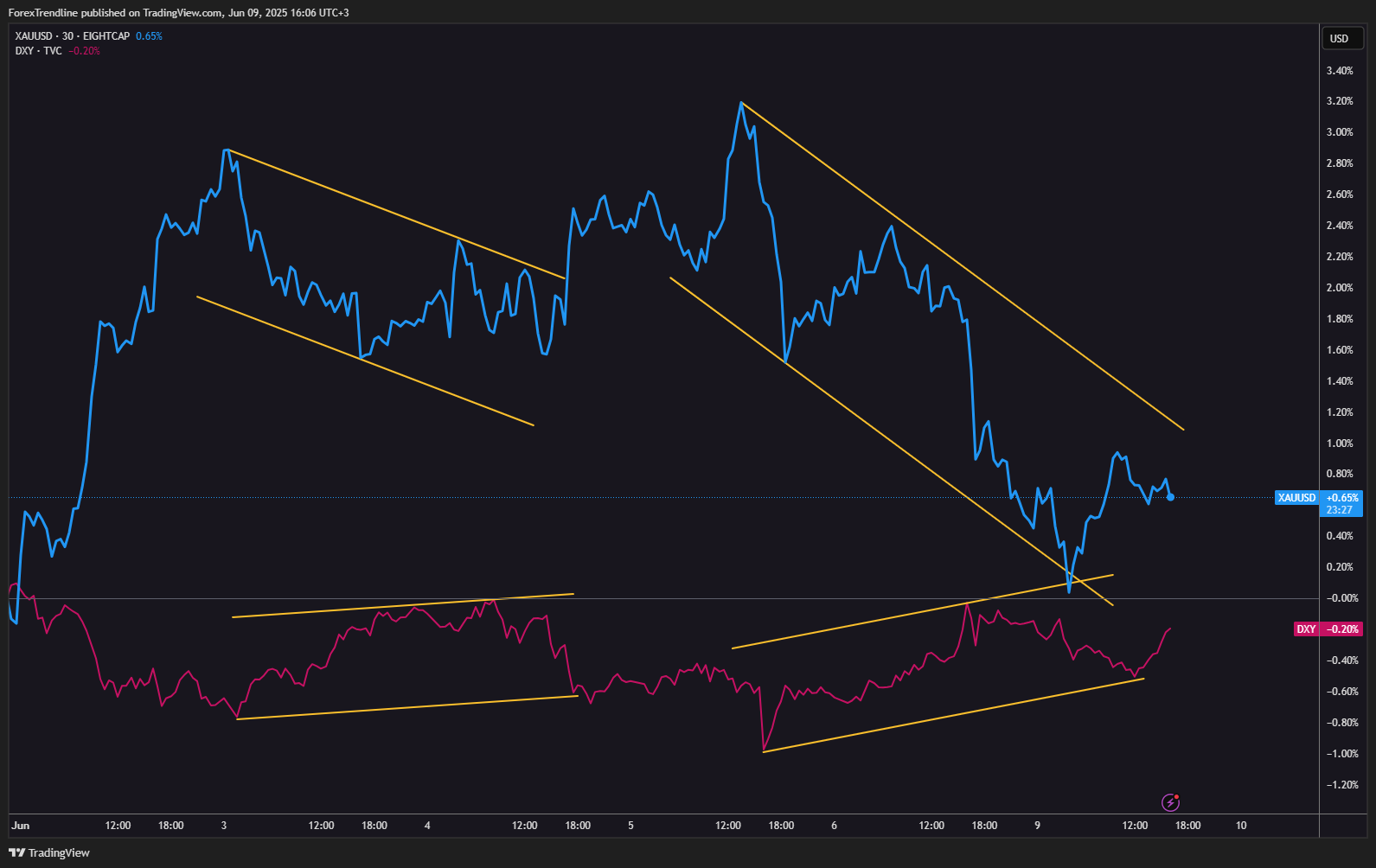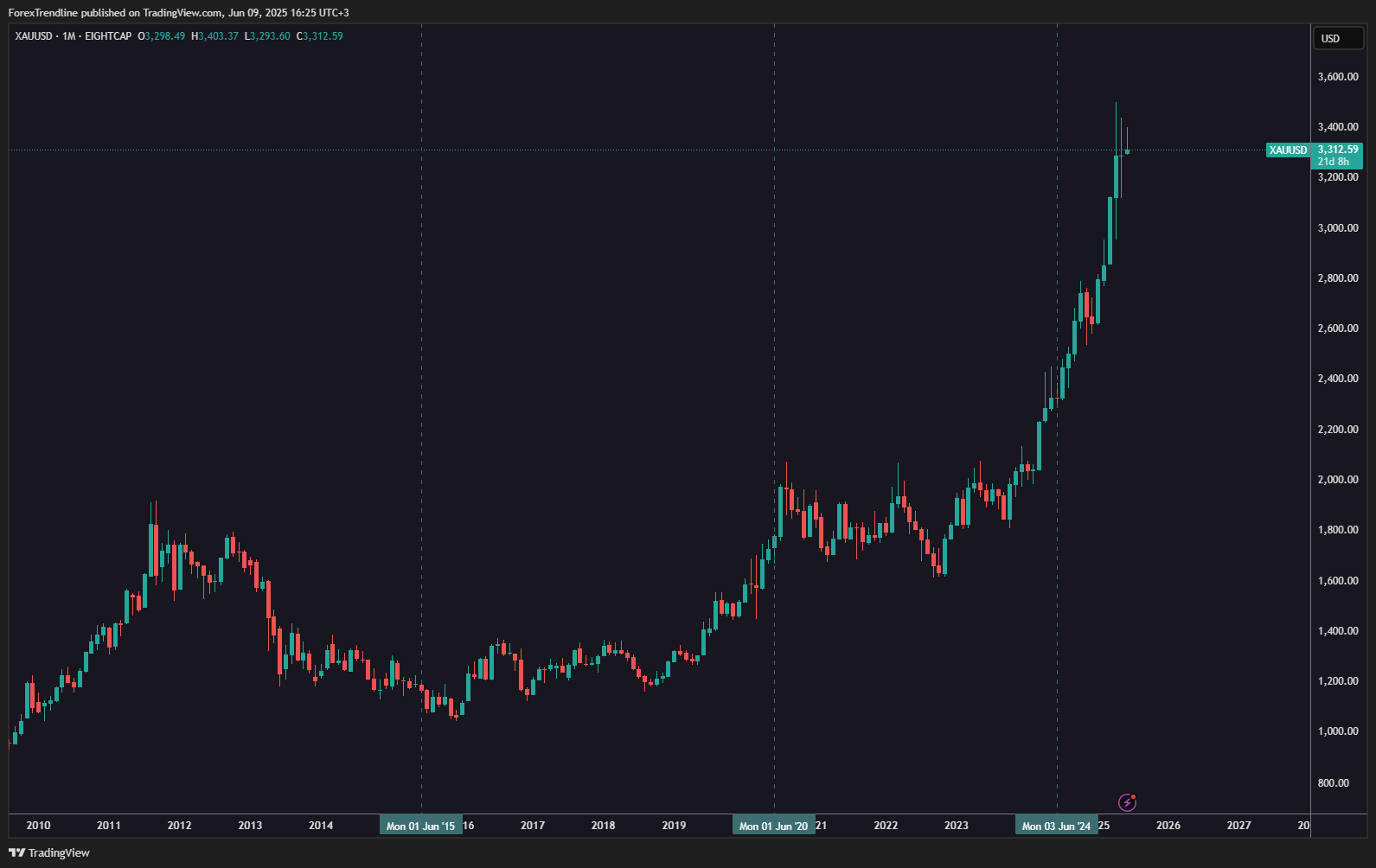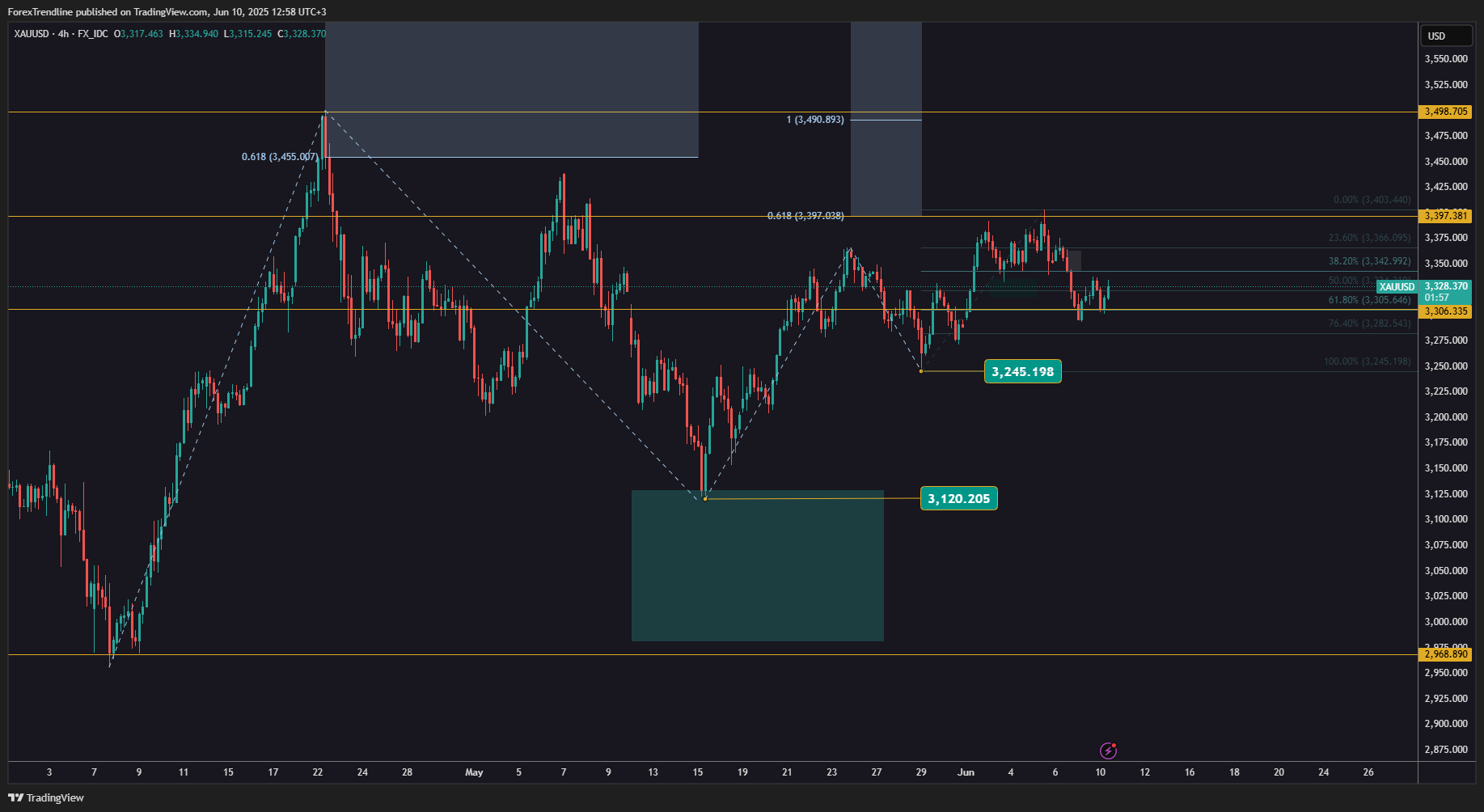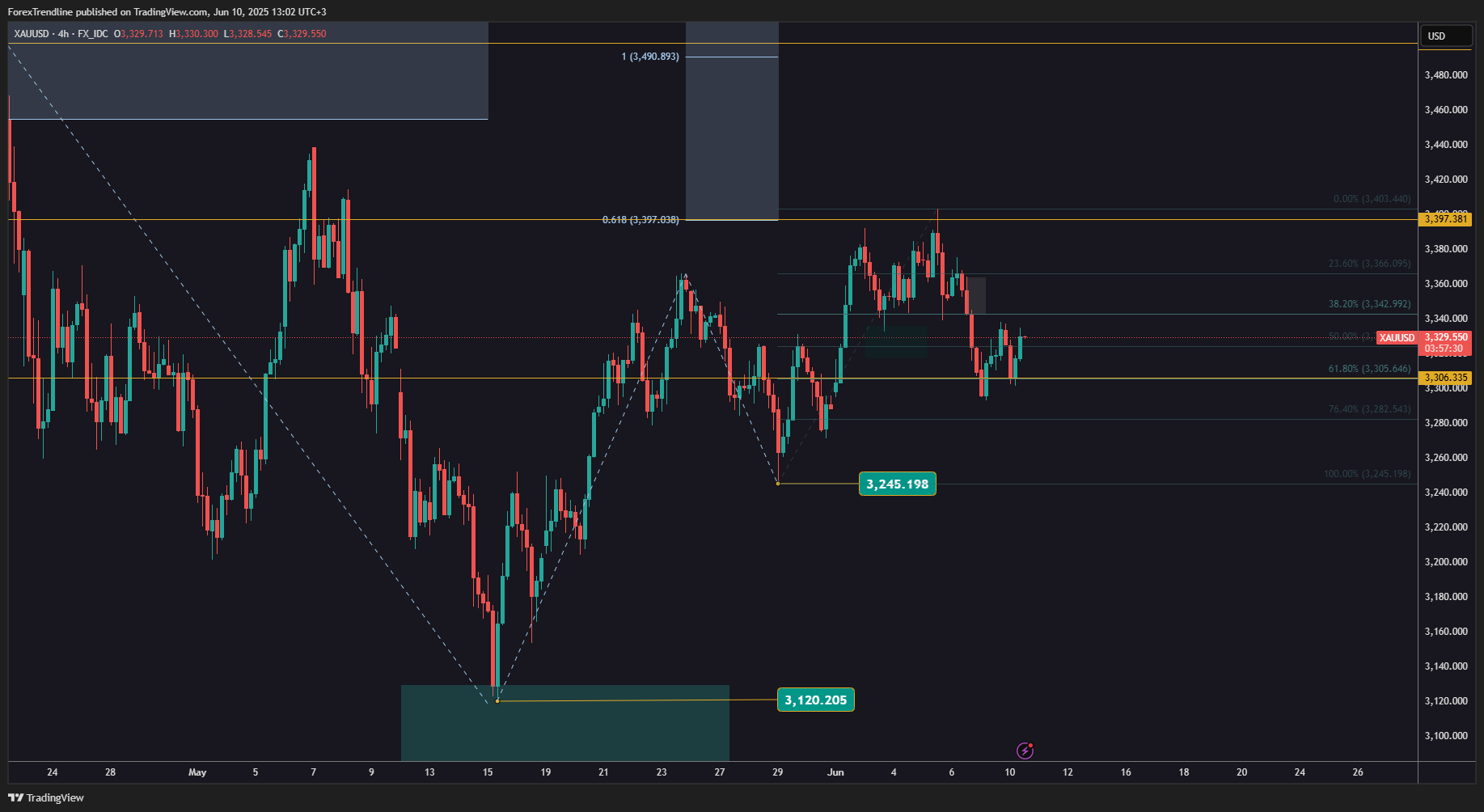Gold – that ancient symbol of wealth and security – never goes out of style. But how exactly do you trade gold in today’s digital world? And more importantly – how can you profit from it without getting lost in a sea of information, charts, and confusing jargon? In this guide, you’ll discover not just the basics, but also practical strategies that real traders use every day to profit from gold.
Content
What is the Golden standard?
What moves the price of Gold?
Gold as an investment
The relationship between Gold and the US Dollar
Long term investments in Gold
Gold trading strategy
A smarter way to trade Gold
Conclusion
What is the Golden standard?
Before diving into actual trading, let’s take a quick step back. The gold standard was a monetary system in which the value of a country’s currency was directly tied to a fixed amount of gold. Governments would set a specific price for gold and commit to buying and selling it at that price. This meant that money had a direct link to gold - for example, if one ounce of gold was valued at $500, then one dollar would be worth 1/500 of an ounce.
This system placed a limit on how much money could be printed, as currency issuance was tied to the gold reserves held by a country. While this helped prevent hyperinflation, it also limited economic growth and reduced government flexibility during financial crises.
During the 19th and early 20th centuries, most developed countries operated under the gold standard, using gold to settle international trade. Countries with trade surpluses accumulated gold, while those with deficits lost it. However, after World War I, the system began to crumble due to rising debt and economic instability.
The United States officially abandoned the gold standard in 1973 and shifted to a fiat currency system - money that has value not because it’s backed by a physical commodity, but because people trust the government that issues it. Today, nearly all currencies worldwide are fiat.
Despite the end of the gold standard, gold has not lost its importance. It remains a symbol of stability and security, especially in times of economic uncertainty. Investors often turn to it as a “safe haven” when markets become volatile.
What moves the price of Gold?
Now that we understand how gold once formed the backbone of the global monetary system, let’s take a look at the key factors that influence its price today. The price of gold isn’t random - its fluctuations often reflect global events. When the world shakes, gold tends to shine.
Here are the main drivers of gold prices:
- Inflation and Interest Rates: When interest rates drop, income-generating assets become less attractive - making gold more appealing. Conversely, high interest rates often redirect capital toward bonds and savings, putting pressure on gold prices;
- Economic and Geopolitical Risk: During times of crisis or conflict, investors seek safety. Gold often rises in value as a result, earning its reputation as a “safe haven”;
- Strength of the US Dollar: Gold typically moves inversely to the US dollar. A weaker dollar makes gold cheaper for holders of other currencies, increasing demand and pushing prices up;
- Central Banks: Decisions made by major central banks - like the Federal Reserve or the European Central Bank - can significantly impact gold prices. Monetary policies such as quantitative easing, interest rate adjustments, and money supply expansion are particularly influential;
- Supply and Demand: The balance between gold production and physical demand plays a crucial role. Factors like mining output, technological advances, and cultural or industrial demand all contribute to price movements.
In short, gold’s price reflects a complex web of global dynamics - economic, political, and emotional.
Gold as an investment
There are several ways to invest in gold - ranging from physical gold in the form of bars and coins to trading gold derivatives on the market. Physical gold is a stable asset, but it’s not very liquid. It requires storage, insurance, and time.
On the other hand, trading gold on the forex market - most commonly represented as XAU/USD - allows you to take advantage of real-time price fluctuations, often using leverage. But with that opportunity comes risk: one wrong move and you could lose more than you initially invested.
Learn everything you need to know to start trading gold. This includes deeper insights into gold as an asset, specific trading strategies, and - most importantly - how to use fundamental analysis effectively when trading gold. All of this is covered in the full course: "How to Trade Gold?"
How to Trade Gold
Find out what determines the price of Gold and how to create your own strategy to trade Gold.
The relationship between Gold and the US dollar
One of the most important relationships every trader should understand is the one between gold and the US dollar. They often move in opposite directions - when the dollar weakens, gold tends to rise in value, and vice versa.
Think of them like a balance scale - when one side goes up, the other naturally goes down. Understanding this dynamic can be a powerful tool in your decision-making process - especially when you combine this analysis with a reliable gold trading bot that automates your trade signals.

The movement of gold prices (blue) versus the US Dollar Index (red)
Long-term investments in Gold
Some investors prefer to avoid the fast-paced nature of day trading, with its charts, volatility, and high leverage. If you’re someone who values stability and predictability, long-term gold investments might be a better fit. Gold is a classic hedge against inflation and often serves as a store of value when stock markets become overheated or unstable.
How does price moves?
Based on data as of June 2025:
- Current price: around $3000;
- 1-year performance: approximately +40%;
- 5-year performance: around +90%;
- 10-year performance: over +180%.
These numbers speak for themselves – with discipline and the right timing, long-term profits from gold can be substantial.
Why does the strategy work?
- Stability in volatile times - Gold doesn’t pay dividends, but it has historically shown strong performance during periods of economic stress. It often recovers faster than stock market indices, offering a sense of security during turbulent times.
- Flexible entry options - You can gain exposure without owning physical gold – through ETFs, gold futures, or leveraged trading. The key is smart planning: analyze the gold–dollar relationship, monitor support and resistance levels, and apply solid risk management.
- Inflation hedge - Gold is an excellent way to preserve purchasing power, especially during periods of rising inflation.

Price increases over the last 10, 5, and 1 year periods.
Gold trading strategy
Gold is once again in the spotlight – and rightfully so. With its current volatility and clear trend structure, the profit opportunities are real. But, as always, they come down to reading the chart correctly and having the patience to wait for the right moment.

If you look at the 4-hour chart, it’s hard to miss which way the wind is blowing — the trend is clearly bullish. But in trading, it’s not enough to simply follow the trend; you need to understand it. Who’s driving it? What are the motivations behind it?
One of the most valuable lessons I’ve learned over the years is to stay in the same boat as the market’s captains. In other words — trade with the big money. When they’re buying, don’t try to sell. This isn’t the time for heroics — it’s a time for reason.
The chart gives us a clear reference point: around $3,120 lies a key support level — a kind of floor that underpins the current structure. If that level is broken with momentum and volume, it’s no longer just market noise — it’s a signal that buyers may be stepping back.
Right now, however, the upward move remains the base scenario. We might see a quick “stop hunt” around the previous low of $3,245 before a recovery and a breakout to higher levels. Gold often plays the fox — returning briefly to snatch its prey before darting off to the next hill.
And this leads to the next question: will you enter now, or wait for confirmation?
It’s no secret that news events like the CPI (Consumer Price Index) can shake the market. Sometimes the moves are so sharp that if you’re not positioned on time — or worse, positioned the wrong way — price can wipe you out like a sudden wave.
My advice? Know the calendar — not just the dates, but the context. What is the market expecting? What would be a surprise? And what’s already priced in?
Whenever you build a bullish scenario, you should also have a sense of where the ceiling might be — at least for now. In this case, we’re watching two key targets: $3,400 — already tested once and now a significant reference point — and $3,490, a more distant level, but not unreachable if momentum holds.

These levels aren’t just random numbers. They reflect market psychology - areas where price has previously reacted, and where it’s likely to react again. It’s not enough to simply know them; you need to understand why they matter.
Shifting to the 1-hour chart, this is where we look for precision - the moment where the entry becomes clear. The recent formation of a bottom gives us a foundation, but the real signal will come with a breakout above the most recent local highs.

If, after the breakout, the price pulls back slightly and retests the level - that’s often your moment. Enter when others are still hesitating. But if the market decides to go into a deeper correction - wait. A better entry will come. Sometimes the best trade is the one you don’t take - and that’s the one that saves you money.
Let me be honest. Over the years, I’ve seen confidence turn into a minefield - especially with gold. Many traders believe that “gold always comes back.” And yes, often it does - but not always in the way you expect.
Overconfidence combined with high leverage is a recipe for disaster. I’ve seen accounts wiped out in less than 48 hours. The reason? A refusal to admit you're wrong.
In a world where everyone is chasing quick profits, gold teaches you patience. It’s not just a metal - it’s a test. Of your mindset. Your discipline. Your ability to think strategically.
Are you ready to wait for the right moment? Or will you jump in too soon - and pay the price?
As legendary trader Paul Tudor Jones once said:
"This business is not about being right. It's about making money when you are right - and losing as little as possible when you're wrong."
A smarter way to trade Gold
Let’s be honest - today’s trading game is nothing like it was five, or even three, years ago. There was a time when a retail trader could stay ahead of the market with basic technical analysis and a bit of discipline. But that world has changed.
You're no longer just competing with other solo traders behind their screens. You're stepping into an arena filled with algorithms, high-frequency trading bots, and entire teams of professionals armed with tools and resources most individuals can only dream of - access to insider-level data, servers located milliseconds from the exchanges, and AI systems crunching millions of data points in real time.
Now factor in your daily life - a full-time job, family responsibilities, a social life, and the need for personal time - and it’s only natural to ask: how can anyone stay competitive in this environment?
The truth is, retail traders need an edge. A tool that doesn’t just help - but truly bridges the gap between them and the "big players." A kind of ally that doesn’t get tired, doesn’t get distracted, and never makes emotional decisions.
That’s exactly where the Volatility Expert Advisor comes in - an automated trading bot designed to track market volatility and open trades based on your own parameters and logic.
Volatility Expert Advisor
Turn market volatility into your greatest advantage with our automated trading robot.
Conclusion
Gold isn't just a metal. It’s the heartbeat of the global economy - a mirror of human uncertainty and hope. Trading it takes more than skill; it demands intuition, discipline, and a clear understanding of risk.
Are you ready to dive into the world of gold - not just as a bystander, but as an active participant? Whether you choose to trade it using a gold-focused trading bot or prefer a hands-on approach, the key is to start with a clear strategy and stay consistent.
If you found this article helpful, subscribe for more practical insights - or explore our full gold trading course, built for people like you: motivated, curious, and ready to trade smart.
How to Trade Gold
Find out what determines the price of Gold and how to create your own strategy to trade Gold.
Risk Warning: All products and services offered by "Forex Trendline" Ltd are for educational purposes only and do not constitute investment advice or a trading recommendation. Trading financial instruments carries a high level of risk and may result in losses. Past performance is not a guarantee of future success. We recommend that you read the full Terms and Conditions before using our services. Nothing on this site should be interpreted as investment advice from "Forex Trendline" Ltd or any of its representatives, directors, or employees.
© 2026 Trendline. All rights reserved
![How to trade Gold? [A detailed guide]](/api/v1/main/image/7db5a1aa-58af-4dd1-98c5-ef61ffd3848e)
